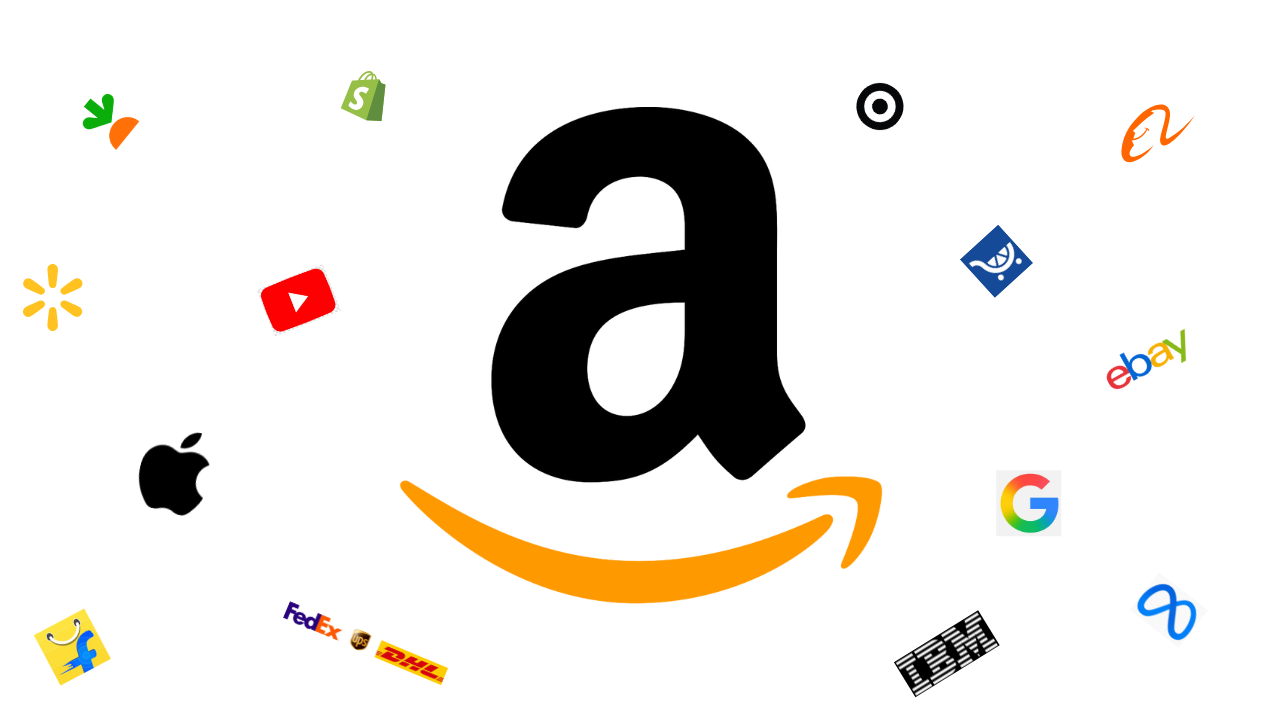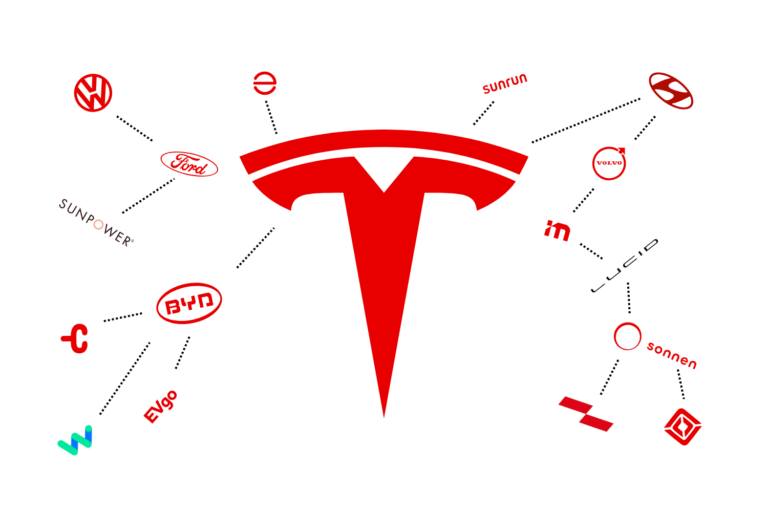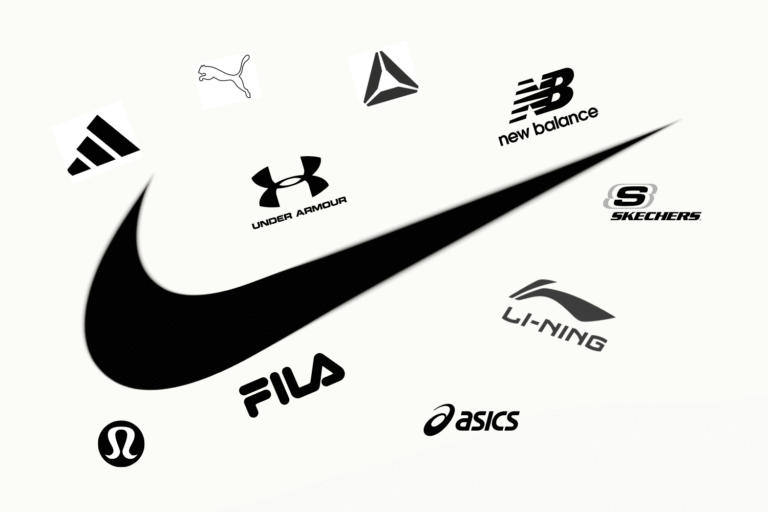Amazon is the leading company when it comes to online shopping. It began its journey as an online bookstore and officially launched its website in 1995. Today, Amazon not only operates as an online e-commerce platform but has also expanded into a cloud computing company with AWS.
With Amazon Prime and the acquisition of MGM, it is also expanding in the Streaming and Entertainment business. Echo, Fire TV, Ring, and Kindle are helping it to make a bigger pie in the Smart Devices and Voice Assistants market.
Amazon attracts consumers who have strong purchasing intent, and it capitalizes on this by offering advertising opportunities to sellers. It has also built a robust logistics and delivery network. It is also present in the Physical & Omnichannel Retail with over 623 physical stores as of 2025.
Despite this, Amazon is still struggling in various areas. Today, many competitors and alternatives are emerging in every sector of its operations. Let’s understand where Amazon should be cautious.
In this ‘Amazon Competitors and Alternatives‘, we’ll learn which companies are performing better or are capable of becoming Amazon’s alternative.

E-Commerce
Amazon Offering
Amazon.com is one of the most expansive digital commerce ecosystems globally. It offers a multi-category digital marketplace that facilitates consumer and business transactions.
Prime Membership: An integrated suite offering expedited logistics, exclusive promotions, and bundled digital media services.
Fulfillment by Amazon (FBA): A vertically integrated logistics solution allowing third-party sellers to leverage Amazon’s warehousing and distribution capabilities.
Amazon Fresh and Pantry: Digitally enabled grocery delivery networks targeting urban consumption behaviors.
Competitors
Global Online Retail
Alibaba (China)
Operates diversified platforms (Alibaba.com, AliExpress) with a B2B and international retail focus. It commands a dominant position in the Asia-Pacific region.
It offers lower seller commissions, providing a cost-competitive alternative to Amazon, particularly in emerging markets where Alibaba’s local presence and regulatory familiarity hinder Amazon’s penetration.
Walmart (USA)
A legacy brick-and-mortar conglomerate undergoing rapid digital transformation. Its strategic acquisition of Flipkart in India directly positions it as a formidable challenger in high-growth geographies.
Walmart’s blend of physical retail scale and online investments enables it to outperform Amazon in value pricing and local logistics in certain markets.
eBay (USA)
It specializes in peer-to-peer and auction-based commerce. Although it lacks integrated logistics infrastructure, it maintains strong performance in niche and secondhand markets, giving it a distinct advantage in resale and collectibles, a segment less prioritized by Amazon.
Fast Delivery & Logistics
JD.com (China)
Possesses full-stack logistics capabilities, offering internal control over fulfillment, similar to Amazon’s operational model.
It competes on efficiency and customer satisfaction, particularly in the Chinese market, where its domestic infrastructure provides faster delivery than Amazon.
Flipkart (India)
It closely replicates Amazon’s model, including proprietary logistics arms and hyperlocal innovations tailored to the Indian consumer base. Flipkart’s deep understanding of local preferences and strategic partnerships with regional couriers create substantial competitive friction for Amazon.
Target (USA)
Target implemented an omnichannel strategy by leveraging its physical stores as fulfillment hubs, thus competing with Amazon in terms of delivery timeframes and convenience. Its integration of same-day services like Drive Up offers an immediacy that Amazon has yet to fully replicate in-store.
Grocery Delivery
Instacart (USA)
Instacart aggregates inventories from third-party grocers and optimizes local fulfillment, providing a decentralized challenge to Amazon Fresh. Instacart’s asset-light model enables scalability and flexibility, making it more agile in adapting to regional grocery demand.
Walmart+ (USA)
It offers subscription-based same-day delivery services with no purchase minimums, directly challenging Amazon Prime’s utility in the grocery vertical.
Its strong in-store inventory and local fulfillment advantage create significant pressure on Amazon in suburban and rural markets.
Kroger (USA)
Partners with Ocado for AI-driven warehouse automation, allowing scalability and competitiveness in high-density markets.
Kroger’s established grocery presence and investment in predictive analytics make it a long-term logistics threat to Amazon’s fresh delivery.
Cloud Computing (AWS)
Amazon Offering
Amazon Web Services (AWS) is a key part of the internet’s computational infrastructure, offering elastic cloud computing, database management, machine learning frameworks, big data analytics, and enterprise-level applications.
AWS’s operating income accounted for approximately 67.23% of Amazon’s total net income of $59.25 billion, highlighting its critical role in the company’s financial performance.
Competitors
Microsoft Azure
Azure is Integrated with Microsoft’s enterprise solutions (e.g., Office 365) and dominates the hybrid cloud segment, posing the most substantive competitive threat in both market share and enterprise penetration.
Azure commands a solid B2B client base and an advanced hybrid infrastructure that fully leverages legacy IT relationships, a competitive edge that Amazon lacks entirely.
Google Cloud Platform (GCP)
It leverages Google’s AI leadership and data processing capabilities to disrupt AWS in R&D-intensive industries. Its strength in analytics and data science makes it a preferred choice in the scientific, media, and education sectors.
IBM Cloud
It targets niche segments requiring regulatory compliance, especially in financial services, offering a hybrid-cloud architecture.
IBM’s consulting legacy and emphasis on data sovereignty appeal to highly regulated industries where AWS faces greater scrutiny.
Oracle Cloud
Oracle Cloud focuses on high-performance databases and enterprise workloads, often servicing legacy Oracle clients. Its vertical integration of software and hardware infrastructure enables optimized performance for mission-critical environments.
Alibaba Cloud
A regional leader in the Asia-Pacific with rapid global growth, reflecting AWS functionalities at scale. Its alignment with the Chinese government’s digital infrastructure goals provides institutional support that Amazon lacks.
Streaming & Entertainment
Amazon Offering
Prime Video offers a diverse range of licensed and original programming, seamlessly integrated within Amazon’s broader Prime ecosystem. The acquisition of MGM and the launch of Freevee enhance content monetization strategies.
Competitors
Subscription-Based (SVOD)
Netflix
Netflix maintains industry leadership through scale and deep investment in original IP, representing a primary alternative for Prime Video. Its unmatched global content budget and first-mover advantage sustain its viewer loyalty.
Disney+
Employs exclusive ownership of high-value franchises (Marvel, Pixar, Lucasfilm) to attract family-oriented and international audiences. Disney’s strong brand trust and extensive merchandising network enhance its ability to retain subscribers.
HBO Max
It is known for premium content and serialized drama, and it challenges Amazon on narrative quality and audience loyalty. Its association with Warner Bros. ensures a constant pipeline of high-quality cinematic content.
Ad-Supported (AVOD)
YouTube
YouTube surpasses Amazon in viewer hours and engagement due to its unparalleled reach and free access to content.
Its creator economy encourages ongoing content creation and niche segmentation that Amazon cannot easily replicate.
Peacock
NBCUniversal’s hybrid monetization strategy is similar to Freevee, offering ad-supported features. Its integration with live television and sports further enhances its viewer proposition.
Tubi
Owned by Fox, the extensive free library offers a budget-friendly option for viewers. Its streamlined operational model allows for widespread distribution and affordable acquisition.
Hybrid Models
Hulu
Hulu combines subscription services with ad-supported options, enhancing its monetization flexibility and allowing it to compete for mid-tier content consumers. Its strength in offering next-day TV shows and niche programming provides a distinctive advantage.
Paramount+
It integrates linear TV, film, and sports streaming, differentiating itself in multi-genre programming. Paramount’s legacy studio access and real-time broadcasting rights hinder Amazon’s attempts to capture live content audiences.
Smart Devices & Voice Assistants
Amazon Offerings
Amazon offers a comprehensive smart device ecosystem centered on convenience, voice interactivity, and home integration.
Echo with Alexa: Amazon’s flagship smart speakers feature Alexa, a voice assistant capable of managing smart home devices, answering questions, playing music, and shopping.
Fire TV: Amazon’s streaming devices and smart TV interfaces deliver access to streaming content, apps, and games.
Ring: A leader in smart home security, Ring offers video doorbells and surveillance products that integrate with Alexa and provide remote monitoring.
Kindle: The market-leading eReader, Kindle, dominates digital reading with a broad ecosystem of content and device options.
Competitors
Smart Speakers
Google Nest Audio
Nest Audio offers a smart speaker, tightly integrated with Google’s AI and ecosystem (Google Assistant), excelling in multilingual support and Android compatibility. It serves as a direct alternative for users invested in Google services rather than Amazon Alexa.
Apple HomePod
A premium smart speaker with superior sound quality and seamless integration within Apple’s ecosystem (iPhone, iPad, Mac). It appeals especially to users invested in Apple’s high-end devices.
Samsung Bixby
Integrated within Samsung smartphones and appliances, Bixby has a broad device reach but is less mature as a standalone voice assistant. It offers an alternative for Samsung loyalists.
Streaming Devices
Roku
A cost-effective, platform-neutral streaming device with a large content library. Roku competes with Fire TV by offering users more neutrality and sometimes better content access.
Apple TV
A premium streaming device with a focus on privacy, quality, and integration with Apple’s digital services, making it an alternative for Apple users.
Google Chromecast
It focuses on a mobile-first design for seamless streaming on Android devices and Chrome browsers, perfect for users in Google’s ecosystem.
Smart Home Security
Arlo
It stands out in wireless security cameras and storage solutions, providing a strong alternative to Ring’s home security products that focus on your safety and peace of mind.
Google Nest
It integrates smart thermostats, cameras, and doorbells into one ecosystem with intuitive automation, presenting a strong alternative to Amazon Ring for comprehensive smart home security.
Eufy
A budget-friendly, privacy-conscious brand offering home security products, making it appealing for consumers who want a cheaper but reliable alternative to Ring.
Advertising
Amazon Offerings
Amazon Ads offers advertisers multiple channels on Amazon’s retail and media platforms, including Sponsored Products, display ads, and video ads. Amazon’s advertising platform is particularly strong in driving purchase intent close to the point of sale on its e-commerce site.
Competitors and Alternatives
Search Advertising
Google Ads
The undisputed leader in keyword-driven search advertising globally, leveraging Google Search’s massive market share and AI targeting. It’s the top alternative for advertisers wanting broader search reach beyond Amazon’s retail ecosystem.
Microsoft Ads
Powered by Bing and LinkedIn data, it targets professional audiences and offers lower-cost bids compared to Google, making it an attractive alternative in niche markets.
Social Media Advertising
Meta (Facebook & Instagram)
Provides granular targeting based on behavior and demographics, making it the leading platform for direct-to-consumer brands looking to build awareness and engagement.
TikTok Ads
Leverages short-form video content to generate high user engagement, particularly with younger audiences, serving as a powerful alternative to Amazon’s video ads.
Snapchat Ads
Focuses on Gen Z audiences with AR features and ephemeral content, complementing video ad strategies on Amazon and other platforms.
Retail Media Networks
Walmart Connect
Walmart’s retail ad network, which allows brands to target shoppers both online and in physical stores, is directly competing with Amazon’s retail media dominance.
Instacart Ads
It targets grocery shoppers at the point of sale in online grocery delivery to reach a high-intent audience, positioning itself as a competitor to CPG brands advertising within the grocery segment.
Target Roundel
Uses first-party shopper data to personalize ads across Target’s stores and online presence, presenting an alternative retail media channel for brands.
Logistics & Delivery
Amazon Offerings
Amazon has built a robust logistics and delivery network to ensure rapid fulfillment and customer satisfaction.
Fulfillment Centers: Strategically placed warehouses across regions for fast processing and dispatch.
Amazon Logistics: Amazon’s last-mile delivery fleet for timely parcel delivery.
Prime Air: Experimental drone delivery for ultra-fast order fulfillment.
Amazon Flex: A gig-economy platform that enables individuals to deliver packages, supplementing the logistics network.
Competitors and Alternatives
Traditional Courier Companies
FedEx
It operates in more than 220 countries across the globe and offers global express and freight services, competing with Amazon in logistics, especially for non-Amazon customers and cross-border shipments.
UPS
UPS provides a vast logistics network domestically and internationally, often serving sellers and competitors of Amazon, with a workforce of over 490,000 employees.
DHL
DHL, a German company, specializes in international express shipping and has a strong presence in Europe and Asia, regions where Amazon’s logistics network is less established.
E-Commerce-Centric Logistics
Shopify Fulfillment Network
Enables direct-to-consumer (DTC) brands to handle their fulfillment, reducing dependence on Amazon’s logistics.
ShipBob
Specializes in fulfillment for small and medium businesses with fast integration, competing with Amazon’s fulfillment services.
Delhivery
Delhivery is a major logistics provider in India, supporting e-commerce in emerging markets and serving as an essential alternative where Amazon is still expanding.
Physical Stores & Omnichannel Retail
Amazon Offerings
Amazon has innovated in physical retail by combining digital technology with brick-and-mortar stores.
Amazon Go: Automated, cashierless convenience stores using sensors and apps for frictionless shopping.
Amazon Fresh: Grocery stores featuring smart technology for fresh foods and seamless shopping.
Whole Foods Market: A premium organic and natural foods supermarket chain acquired by Amazon.
Amazon Style: Experiential clothing stores that blend digital and physical retail.
Competitors and Alternatives
Grocery Chains
Walmart
Walmart is the leading U.S. grocer, features strong omnichannel integration, providing real-time inventory visibility across both stores and online, making it a strong competitor to Amazon Fresh and Whole Foods.
Kroger
Kroger employs AI and automation for warehouse and inventory management, pushing innovation in grocery retail.
Costco
Costco is known for its bulk purchasing and growing online presence, providing a membership-based alternative to Amazon’s grocery model.
Tech-Integrated Retail
Hema (Alibaba)
A pioneer in China’s omnichannel grocery space, combining app-based ordering and in-store fulfillment, competing with Amazon’s Go and Fresh stores.
Walmart Scan & Go
Enhances in-store experience by allowing customers to scan items via mobile phones and self-checkout, rivaling Amazon Go’s frictionless model.
7-Eleven
7-Eleven is piloting cashierless stores worldwide and emphasizing convenience by utilizing AI, which competes with Amazon Go in the convenience retail sector.
I hope you find this article helpful. Please read the SWOT Analysis of Amazon.


